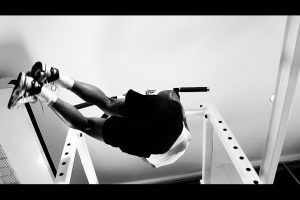ARE YOU FLEXIBLE?
What is flexibility? Essentially, flexibility is the ability to perform pain-free movement around the joints with the help of muscles, tendons, ligaments, and skin, together with the joints.
Increasing flexibility can not only help ease the physical pain of tasks such as housework and grocery shopping, but it can also help you mentally with your day-to-day tasks. Several studies show that being more flexible can help with depression, anxiety, and other problems.
What is stretching? The correct definition would be: a type of movement or exercise done to increase flexibility for general health, sports, or healing.
Stretching is a common type of exercise that helps people loosen up, move their joints more easily, and become more flexible. It is also a part of most pre-exercise routines, which are dynamic in nature, and post-exercise routines. select static in nature
Even though being flexible is good for your overall fitness, being too flexible can hurt your body as your tensile strength goes down. Therefore, it is essential to incorporate a safe stretching routine with proper stretching techniques.
When you’re new to working out, you may be told to stretch before and after. While this is a good habit, it’s important that you know the differences between stretching and flexibility training. Flexibility is the ability to move your joints through their full range of motion without pain or discomfort. Stretching is a therapeutic activity that is meant to increase your range of motion and make your muscles less stiff.
Finally, before beginning any flexibility program, it is wise to have a flexibility assessment done by a trained professional.
The major benefits to any flexibility program and subsequent results will include:
1. Increased movement around a joint
2. Injury prevention and treatment
3. Increased co-ordination
4. Improved circulation
5. decreased soreness due to other activity
Types of stretches include:
1) Static (slow and without movement, sustained)
2) Passive (with the assistance of another person/equipment )
Even though this article mostly talks about static stretching, which is safe and effective for most people, there are other ways to stretch in sports and rehab, such as passive, active, PNF, and dynamic. which we will go over in detail in a future article.
A word of warning: besides static stretching, it’s not a good idea to try other types of stretching without the help of a trained fitness professional. If done wrong, these methods could hurt you more than help you.
12 musts for a good flexibility program :
1. Don’t stretch if you just had a recent fracture, infection, inflammation, or sharp pain, or if you have any kind of medical condition. Always consult the appropriate professional prior to engaging in any flexibility program.
2. Proper warm-up before stretching
3. Target all major muscle groups
4. Hold each stretching exercise for 40–60 seconds and repeat 2-3 times on each stretch
5. A minimum of 4-5 days per week
6. Proper breathing is important (exhale when you feel the stretch)
7. Only stretch to the point of slight discomfort and never to the point of pain
8. Do not bounce or jerk while you stretch.
9. Do not force the movement.
10. Only use the recommended routine, exercise, and body position.
11. Do not overstretch or stretch weak muscles without guidance.
12. Hold the stretch in its natural range of motion.
Always remember to warm up for 5–10 minutes, then follow with your cardio-vascular or resistance training. Lastly, end your workout with some static stretches. You’ll be more flexible for the rest of your active life, and you’ll be able to avoid getting hurt when you bend, reach, or twist. Workout


